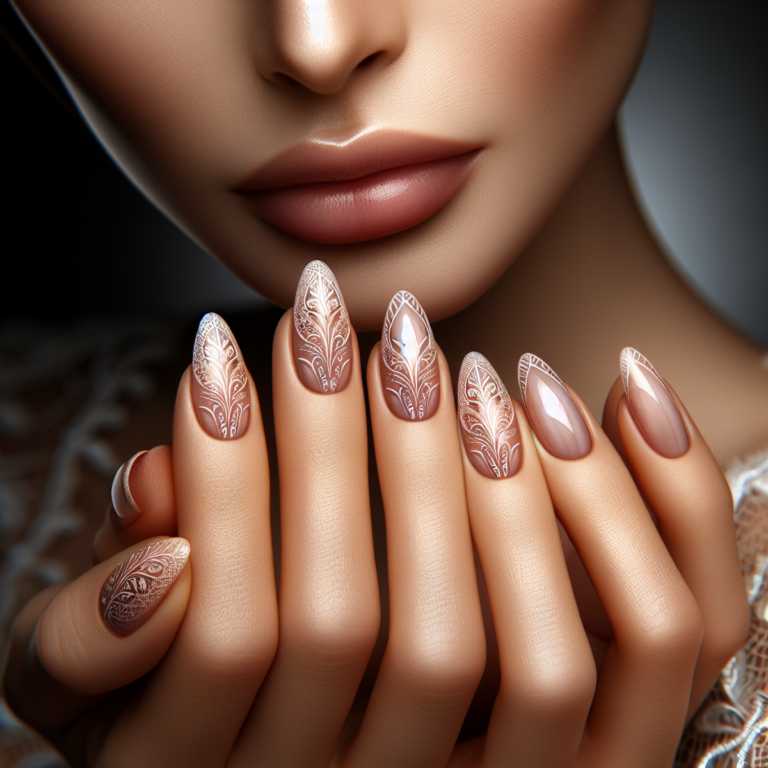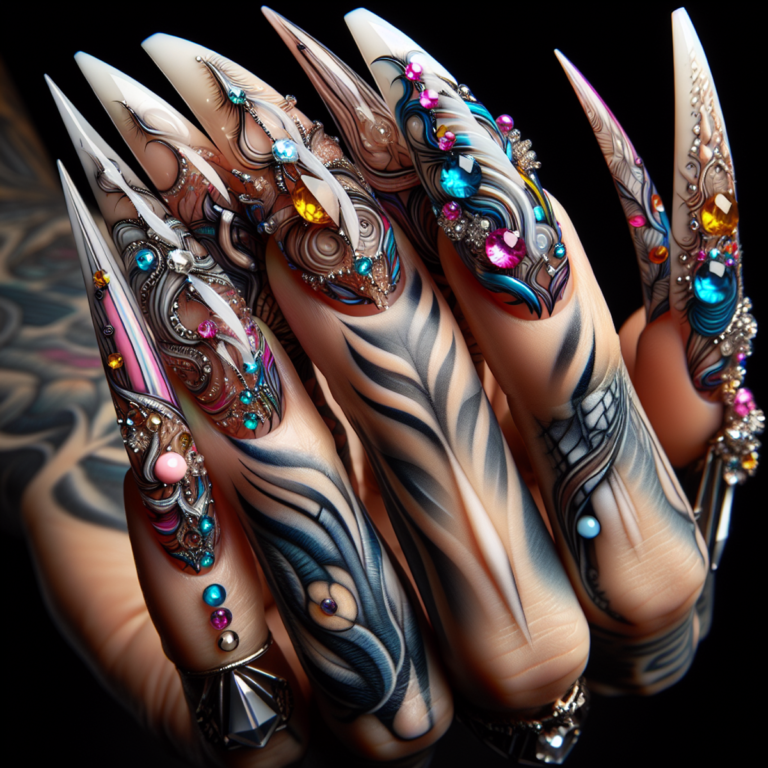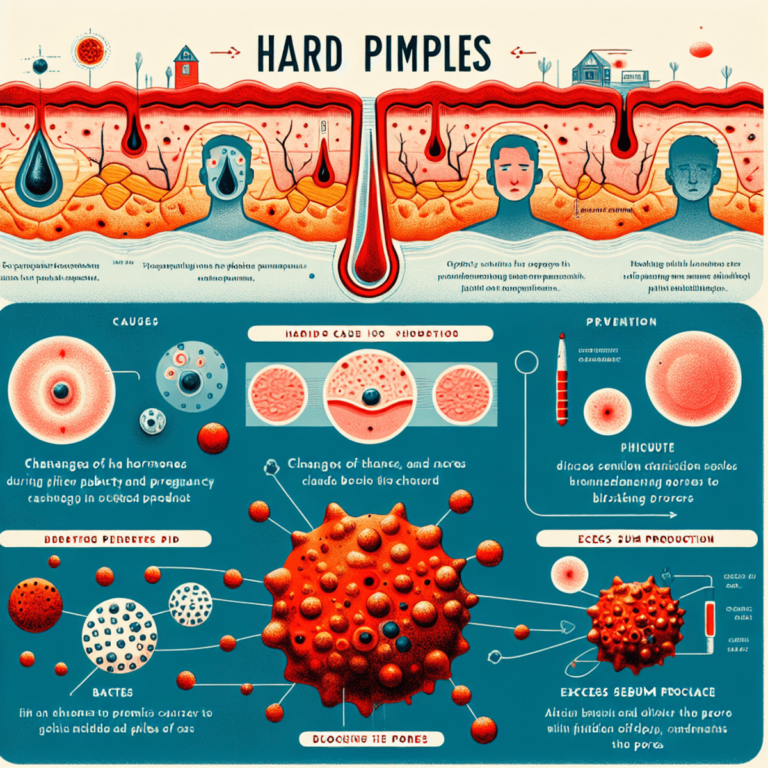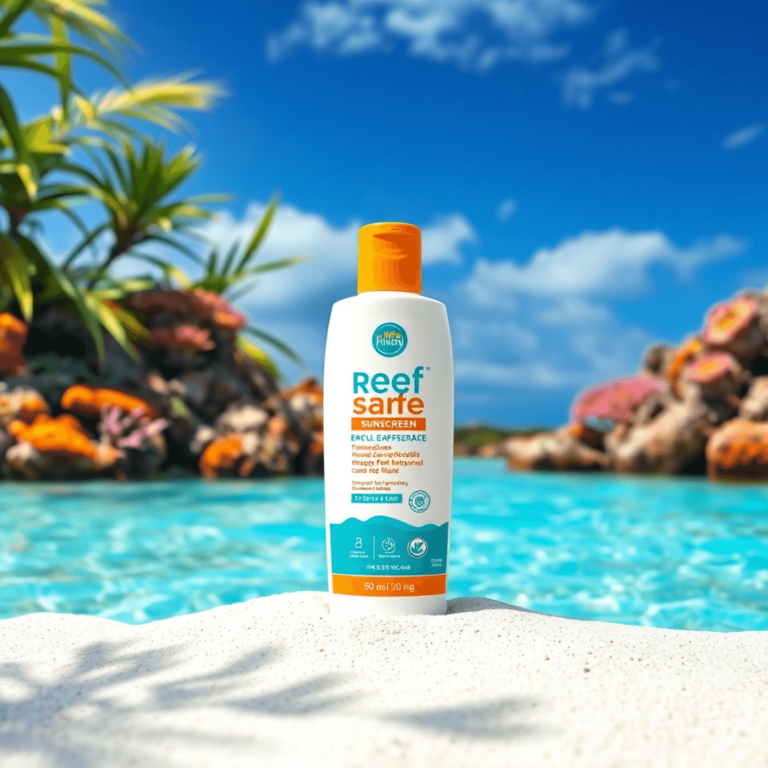“Nail Cycling” Is the Latest Expert Recommended Trend
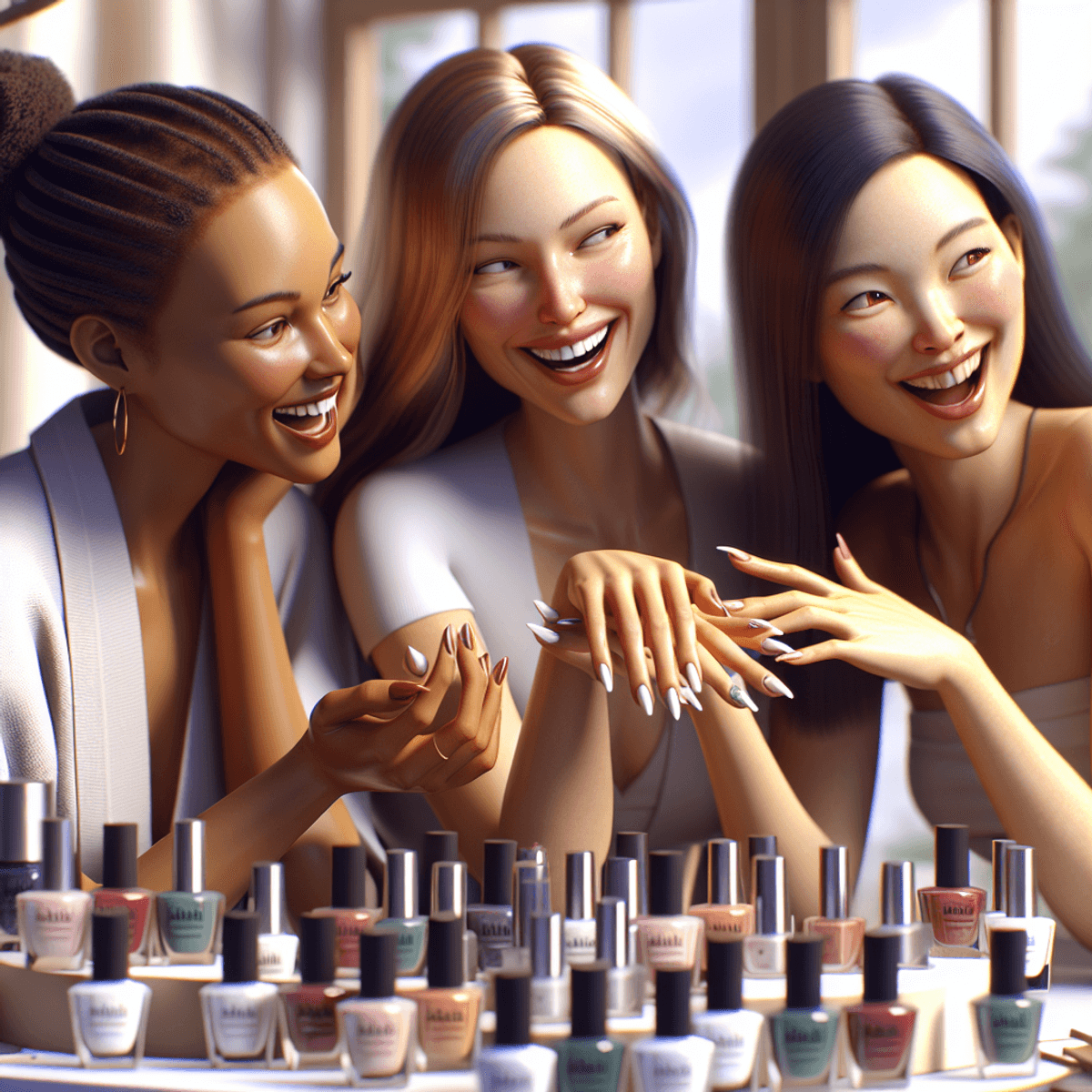
Introduction
NailCycling is a trending practice among beauty enthusiasts that encourages individuals to take breaks from manicures, particularly gel, acrylic, and dip nails. This approach emphasizes the importance of allowing natural nails to recover and thrive.
Maintaining healthy nails is crucial for both aesthetic appeal and overall nail health. Frequent exposure to harsh chemicals and UV light from manicures can lead to weakened nails over time. NailCycling addresses this issue by promoting designated periods of rest, enabling the nail matrix to repair itself effectively.
Key Benefits of Nail Cycling:
- Prevention of Nail Thinning: Regular breaks help mitigate the risk of thinning.
- Strengthening: With time off from artificial enhancements, users often notice stronger and thicker natural nails.
- Healthier Growth: Nail cycling supports optimal growth conditions, reducing brittleness and cracking.
When practiced correctly, nail cycling not only enhances the appearance of your nails but also contributes to their long-term health. Embracing this trend can lead to rejuvenated, resilient nails that look and feel their best.
Understanding Nail Cycling
Nail cycling is a practice that has gained traction among beauty enthusiasts seeking healthier nails. Definition of nail cycling involves intentionally taking breaks from manicures, especially those involving gel, acrylic, or dip nails. This method allows your natural nails to recover and rejuvenate, minimizing the risk of damage caused by prolonged exposure to artificial products.
Key Aspects of Nail Cycling:
- Purpose: The primary goal of nail cycling is to let the natural nail regain its strength and integrity. Manicures can lead to thinning and brittleness over time. By allowing nails to rest, you promote better overall health for your nails.
- Duration and Frequency:
- Experts recommend taking a break of at least one week every eight to ten weeks. This time frame allows for adequate recovery while minimizing the risk of long-term damage.
- During this rest period, it’s crucial to avoid applying any artificial products or undergoing further manicures.
Benefits of Breaks from Manicures:
- Taking breaks enables the nail matrix, where growth occurs, to repair itself effectively.
- Natural oils and moisture levels can return to optimal conditions, reducing issues such as peeling or cracking. For those experiencing soft or peeling nails, implementing some tips could be beneficial.
Recognizing when it’s time for a break is vital for maintaining healthy nails. Signs may include discoloration or brittleness. You should consider incorporating nail cycling into your routine if you frequently use products that put stress on your natural nails. Embracing this practice could lead you toward achieving stronger and healthier nails in the long run.
The Benefits of Nail Cycling for Your Nails
Nail cycling offers a multitude of advantages, leading to stronger and healthier nails over time. By allowing your natural nails to rest and recover, you can experience significant improvements in their condition. Here are some key benefits supported by expert insights:
1. Strengthened Nail Structure
Research indicates that regular breaks from manicures can reduce thinning and brittleness. When nails are exposed to harsh chemicals or constant pressure from artificial enhancements, they can weaken. By practicing nail cycling, you allow your nail matrix to repair itself, promoting thicker growth.
2. Improved Moisture Retention
Continuous use of products like gels or acrylics can strip the nails of natural moisture. During the recovery phase of nail cycling, using hydrating treatments such as cuticle oils helps restore moisture levels, leading to healthier nail beds.
3. Benefits for Sensitive or Damaged Nails
Individuals with sensitive or damaged nails often find relief through nail cycling. This practice allows their nails to recuperate from trauma caused by frequent manicures. Experts suggest that those experiencing issues like peeling or cracking may notice remarkable improvements after committing to regular breaks.
4. Reduction in UV Exposure Risks
Gel manicures often involve the use of UV curing lamps. Prolonged exposure to these devices can pose risks to nail health. Nail cycling minimizes this exposure while giving your nails a chance to breathe and recover.
5. Long-Term Nail Health
Committing to nail cycling is not just about immediate improvement. It sets the foundation for long-term nail health, encouraging natural growth patterns and reducing the chances of future damage.
By integrating nail cycling into your beauty routine, you actively contribute to nurturing your nails back to health while reaping lasting benefits that enhance their appearance and strength.
Expert Opinions on Nail Cycling: What Dermatologists and Nail Technicians Say
Insights from professionals provide valuable context for understanding the benefits of nail cycling.
Dermatologists’ Perspectives
- Impact on Nail Health: Dermatologists emphasize that frequent manicures, particularly those involving gel or acrylic applications, can lead to weakened nails. Regular use of these products may contribute to nail thinning, brittleness, and even permanent damage in some cases.
- Importance of Breaks: Many dermatologists advocate for breaks between manicures as a preventive measure. They suggest that allowing natural nails time to recover promotes healthy growth and reduces the risk of conditions such as onycholysis, where the nail separates from the nail bed.
Insights from Nail Technicians
- Real-world Observations: Experienced nail technicians often share anecdotal evidence regarding nail cycling’s positive effects. Many have witnessed clients returning with noticeably healthier nails after implementing breaks in their manicure routines.
- Client Transformations: Nail technicians report that individuals who practice nail cycling experience improvements in nail strength and appearance. Clients with previously damaged or sensitive nails have shown significant recovery when adhering to recommended break schedules.
Professional Advice
- Both dermatologists and nail technicians agree on the necessity of proper nail care during breaks. Utilizing nourishing treatments like cuticle oils and strengthening serums can enhance recovery results.
- The consensus among experts highlights that while regular manicures can be beautiful, prioritizing nail health through practices like cycling is essential for long-term benefits. This professional insight supports the growing trend of nail cycling among beauty enthusiasts who value both aesthetics and health.
Signs That Your Nails Need a Break: Recognizing When to Start Nail Cycling
Maintaining healthy nails is crucial for both aesthetics and overall nail health. Recognizing the signs that your nails may need a break can prevent further damage and promote recovery.
Characteristics of Healthy Nails:
- Smooth Texture: Healthy nails typically have a smooth surface without ridges or bumps.
- Consistent Color: A natural pink hue indicates good blood circulation and nail health.
- Flexibility: Nails should bend slightly without breaking, showcasing proper moisture levels.
Signs of Unhealthy Nails:
- Peeling: Layers of the nail starting to separate can indicate weakness or damage.
- Yellowing: Discoloration may suggest issues such as fungal infections or prolonged exposure to certain products.
- Brittleness: Nails that easily crack or break are often crying out for a break from harsh treatments.
Other Indicators:
- Dark Spots or Bruising: These can result from trauma or pressure, necessitating immediate attention.
- Stains: Persistent staining from polish or other products might suggest it’s time for a detox period.
Pay close attention to these indicators. If you notice any combination of these signs, it may be time to initiate nail cycling. Allowing your nails to rest can help restore their health and resilience, ensuring they remain strong for future manicures.
Protecting Your Nails During Manicures: Tips for Minimizing Damage While Still Enjoying Them
Maintaining beautiful nails while enjoying various manicure styles requires careful attention to potential damage. Environmental factors, such as exposure to UV radiation from curing lamps used in gel manicures, pose a risk. These lamps emit UV light, which can lead to nail weakening and increase the chances of long-term damage if not properly managed.
To minimize harm during gel applications, consider the following protective strategies:
- Use SPF: Apply a broad-spectrum sunscreen on your hands before using a curing lamp. This can help shield your skin and nails from harmful UV rays.
- Limit Frequency: Space out your gel manicures to give your nails a much-needed break. As mentioned earlier, aim for at least one week off every eight to ten weeks.
- Opt for LED Lamps: If available, choose salons that use LED curing lamps instead of traditional UV lamps. LED lamps typically emit less UV radiation and cure products faster.
Additionally, be mindful of mechanical damage during the application and removal process:
- Avoid aggressive scrubbing or scraping when removing old polish; this can weaken the nail structure.
- Use gentle tools and techniques during manicures to prevent unnecessary stress on your nails.
Product usage also plays an essential role in nail health. Choose high-quality products that are free from harsh chemicals. Look for formulations that contain nourishing ingredients like keratin and vitamins to support overall nail strength.
By implementing these protective measures, you can enjoy stunning manicures without compromising the health of your natural nails.
Recommended Practices During Nail Cycling Breaks for Optimal Recovery and Maintenance
Taking breaks during your nail cycling journey is crucial for optimal nail recovery. Here are specific treatments and products that can enhance the healing process:
1. Cuticle Oils
Essential for moisturizing both the cuticles and nail beds. Look for oils rich in nourishing ingredients like jojoba oil, vitamin E, or almond oil. Regular application can prevent dryness and promote flexibility.
2. Strengthening Treatments
Consider using nail strengtheners designed to fortify and protect your natural nails. These products often contain proteins or calcium that help rebuild damaged nails, making them less prone to breakage.
3. Hydration
Keeping your nails hydrated is key during the recovery period. Drinking plenty of water aids overall nail health. Additionally, applying a hydrating hand cream or lotion can further enhance moisture retention in the skin surrounding your nails.
4. Gentle Buffing
Lightly buffing your nails can stimulate circulation without causing damage. This practice encourages natural growth and helps remove any rough edges.
5. Avoid Harsh Chemicals
During breaks, steer clear of acetone-based removers or harsh cleaning agents that may strip moisture from your nails.
Implementing these practices not only facilitates recovery but also maintains the health of your nails throughout the entire cycling process. Prioritizing hydration, nourishment, and protection will lead to stronger, healthier nails as you transition back into regular manicures.
Skepticism Surrounding Nail Cycling: Debunking Myths and Addressing Concerns Raised by Critics
Skepticism in the beauty community exists regarding nail cycling, particularly about its necessity and effectiveness. Various opinions emerge from both professionals and enthusiasts, leading to a division in the understanding of this trend.
Common concerns include:
- Individual Differences: Not all nails are created equal. Some individuals may not experience damage from continuous manicures, while others with sensitive or damaged nails could benefit significantly from nail cycling. This variability raises questions about whether nail cycling is universally essential.
- Efficacy Debate: Critics argue that regular use of high-quality products can mitigate damage without needing to cycle nails. They suggest that proper care can lead to strong nails regardless of manicure frequency.
- Expert Opinions: Some dermatologists assert that nail health largely depends on individual habits and genetics. They highlight the importance of maintaining a balanced diet and hydration over strictly adhering to a cycling schedule.
- Misinterpretation of Damage: Certain signs often considered indicators for breaks, such as slight peeling or discoloration, might not always warrant immediate action. Experts remind us that minor irregularities can occur naturally without indicating severe damage.
Understanding these differing perspectives allows you to make an informed decision about incorporating nail cycling into your routine. Balancing expert advice with personal experiences can play a crucial role in determining what works best for your nails.
Embracing Nail Cycling as Part of Your Beauty Routine
In today’s beauty landscape, a commitment to nail health is essential. As you explore different methods to maintain beautiful nails, consider incorporating regular breaks into your manicure routine. Here are some compelling reasons to embrace nail cycling:
- Long-term benefits: Regularly allowing your nails to rest can lead to stronger and healthier growth over time.
- Prevention of damage: Taking breaks helps prevent thinning and brittleness associated with constant use of gels and acrylics.
- Enhanced recovery: Your nails will have the opportunity to repair and rejuvenate, particularly if you use nourishing treatments during breaks.
Listening to your nails is crucial. If they show signs of distress such as peeling or yellowing, take those indications seriously.
Nail cycling may require an adjustment in your beauty routine, but the positive effects on your nail health make it worthwhile. By committing to this practice, you not only improve your natural nails but also pave the way for vibrant manicures in the future.
Taking care of your nails reflects a broader commitment to self-care and wellness. Embrace nail cycling as a step towards achieving the healthy, beautiful nails you desire!


